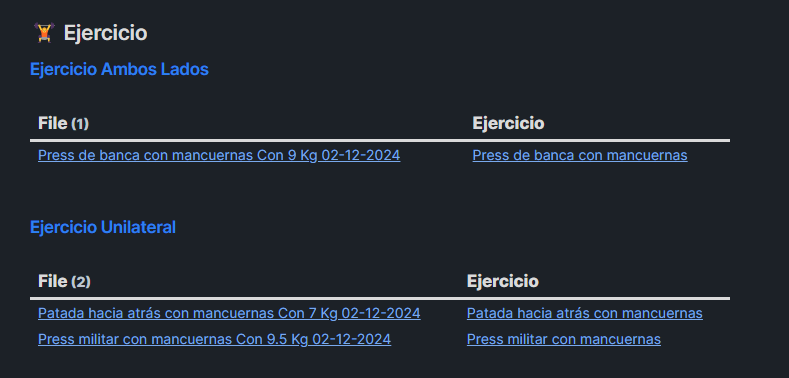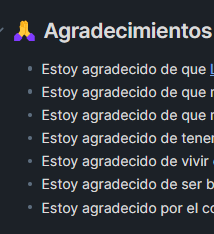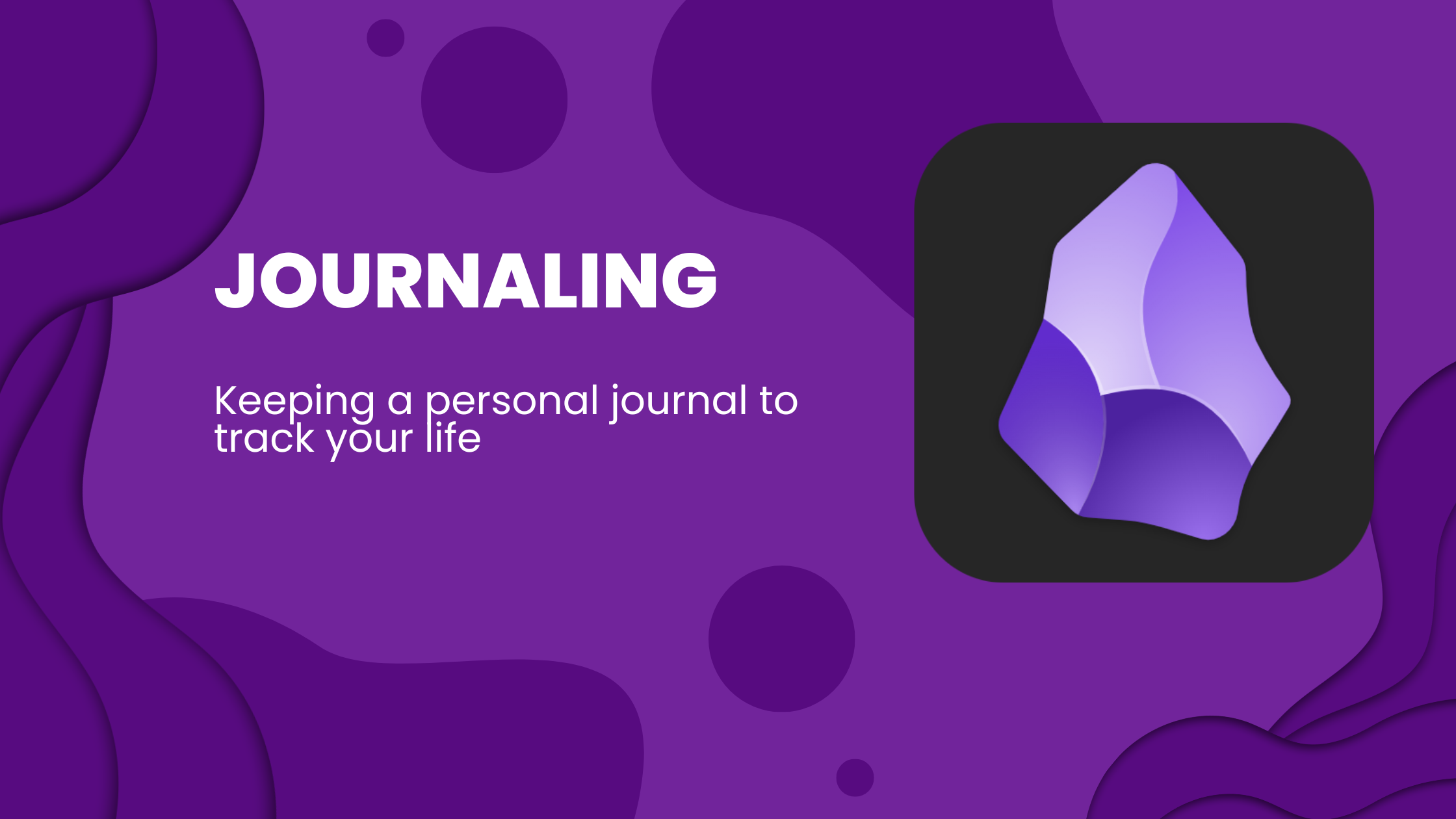Since I was around 14 years old, I have found it very satisfying, relaxing, and therapeutic to keep a journal where I write down all sorts of things that happen to me throughout the day. At first, it was just about making a summary of what had happened during the day: important events, feelings, etc.
Over time, I’ve changed the way and the tools I use for it. At first, I did it in OneNote on a tablet I had when I was 14 years old. Then I switched to Journey, an app specialized in this that allowed you to add feelings and that kind of thing. Seeing that I was a bit tied to the platform and, at at the time, to the device (since it didn’t have a desktop version), I moved to Evernote. It was simpler there, but it gave me the advantage of being cross-platform. However, I felt that something was missing.
One day, while watching a video on YouTube, I came across Roam Research, an app that allowed you to organize your notes with links. I loved this idea, but at that time it was in beta, and I couldn’t get access. This left me feeling disappointed. I researched and looked for alternatives that offered the same capability: being able to link things in a graph-like manner. I struggled a lot to find a similar option; I even considered developing it myself (very enthusiastic thinking, XD). Finally, I found a solution that met all my needs: Obsidian.
What I’m going to show here is how, by leveraging all the capabilities of Obsidian, I’ve built a journaling system that works for me and allows me to keep control of many aspects of my life.
🧩 Parts
My journal consists of many parts, each dedicated to an important aspect of my life. In this article, I’ll touch on them briefly, but if there’s interest in any particular one, feel free to mention it, and I can go into more detail on that topic.
🟦 Meta Info
Since it’s written in Obsidian, and therefore in Markdown, my notes have a meta information section where I record relevant things about the day that would otherwise be more complicated to log naturally.
💙 Feelings
I think it’s good to be aware of how we feel throughout the day, beyond just good or bad. I like having this section to express with more precise words how I felt during the day: whether the day was stressful, if I felt overwhelmed, worried, excited, tired, etc.
This also allows me to notice patterns in my behavior, see what usually makes me feel overwhelmed, or how I feel in certain situations. Knowing this, I can better manage those situations. Moreover, it promotes being more specific in expressing our feelings.
---
feeling:
- happy
- proud
Having it in the note metadata, I can query which days I felt angry, happy, proud, etc.
😴 Sleep
A fundamental part of my life is sleeping. I enjoy it a lot. For a long time, I struggled to know how much time I needed to sleep since sometimes 8 hours would leave me tired, and with fewer hours, I’d feel refreshed. This section helps me track times and actions on the occasions when I sleep best. I log bedtime, wake-up time, and quality.
sleep:
bedtime:
hour: 23
minute: 30
wakeup:
hour: 7
minute: 30
rating: 5
As with feelings, having this in metadata allows me to have a dashboard to average the sleep time during which I rest better.
🎆 Important Events
It’s happened to all of us: you’re chatting with a friend who asks what you’ve been up to, and you go blank. You’ve done a lot since you last saw each other, but right now, you’re not aware of it. For me, in this section, I log everything I think is worth mentioning in such situations: a small work achievement, progress toward an exercise goal, a new dish I cooked, etc.
With this, I can later have a dashboard to select a date range and see the type of things that happened in that range.
# Achievements/Events Dashboard
## 📆🏆 Month
```dataview
TABLE event
FROM #journal
AND !"Templates"
WHERE length(event) > 0
AND date(file.name, "dd-MM-yyyy").month >= 12
AND date(file.name, "dd-MM-yyyy").year = 2024
SORT date(file.name, "dd-MM-yyyy") DESC
```
🏷 Tags
Lastly, the most important part: tags. These allow me, firstly, to know that the note I’m writing is part of my journal, thanks to the #journal tag. This way, no matter where I write the note, I know it will be considered part of the journal. Beyond that, there are many more tags, and you’re only limited by your needs, but for me, there are two main ones:
#nap: As part of my sleep tracking, it’s also important to note which days I needed a nap because the exhaustion was too much.#pain_of_x: I tag whenever I feel unwell. It might be a headache, stomachache, backache. I like having this information in case an illness or discomfort evolves into something more serious. Additionally, it helps me find patterns regarding what I ate or what happened on the days I felt unwell that could have influenced the discomfort.
🟧 Main Information
This section is more like a standard journal, except for a few parts, but it’s mostly what I see when reviewing notes. It’s more like the content of the note and is written in a more natural style.
💪 Exercise
This section is not written naturally, especially because it’s not something I log in the journal note. All exercise-related information is a separate methodology/system that I plan to review in another article.
For now, what I see in the note is a summary of the exercises performed.
And in each individual note, I can find full information on repetitions, variations, etc.
🥪 Meals
In this section, I log my meals throughout the day to track the nutritional values of what I’ve eaten. Similarly, this system was reviewed in the Obsidian: Nutrition 🔗 article. There, you can see the full system.
In general, I log what I ate, and a table is displayed showing the total values of my macronutrients consumed.
🚀 Projects
How I manage my projects and document my progress was already reviewed in the Obsidian: Projects 🔗 article.
In summary, just like with exercise, here I only have a query showing the completed tasks during the day related to any of the projects I work on. It gives me greater visibility into how I’m progressing and how, bit by bit, I’m making substantial progress.
🙌 Gratitudes
I like to keep in mind the things I’m grateful for, not in a “magical” way, but in a way that allows me to appreciate things we sometimes take for granted or that once thrilled us and later forgot how lucky we are to have achieved them.
I make a big effort to fill this section as thoroughly as possible each day. Later, I can gather all the entries in a Gratitude Dashboard that reminds me, as a whole, of all the things I’m grateful for.
It’s very useful on hard days.

✅ Anti To-Do List
We’re used to having a to-do list to see what we need to accomplish during the day. I have mine. But also, at the end of the day, I like to review all the tasks I completed. It gives me a dose of satisfaction to see everything I advanced, even if it’s unrelated to projects, but still very valuable and important, like cleaning the house or doing the dishes.
Additionally (and this is just an idea), you can track something similar for the people you live with, not with the intent of counting who does more, but with the intent of being aware of everything others do, which we might not always appreciate enough.
🏆 Recognitions
I’m a big fan of the culture of recognizing others. I think we often wait for the right moment or the right instance to acknowledge people. Personally, I try to recognize as soon as possible and as specifically as possible to truly give value to the recognition. I really dislike dynamics where people are invited to give recognitions, and they “acknowledge” everyone because, at least in my *
conception*, vaguely and generally recognizing everyone is equivalent to recognizing no one.
So, if I can, I like to recognize the person as soon as possible. But in case I can’t, and also to have a record of valuable things about that person, I keep track of recognitions for people throughout the day.
Again, leveraging the power of dataview, I use these listings so that each recognition appears in the note for each person.
❤🔥 Entries
Here, I write about events of the day, but with much more detail: things I liked, how they made me feel, things that upset me, why they upset me, things that intrigue me. This is the most personal part, as the main purpose is to vent and clarify my thoughts.
Still, through Obsidian’s links and metadata annotations, I can add more data to the note. For example, I can write (feeling:: excited), and that will automatically add it to the feelings list I mentioned earlier.
Beyond that, it’s the part with the least technical purpose, but it holds the most emotional importance.
🧠 Thoughts and Things Learned
Every day, we learn something. This section shows me a summary of all the notes that are reflections or knowledge I wrote down during the day, giving me greater visibility into everything I learned that day and might not be as aware of.
📖 Conclusion
Keeping a journal in Obsidian has not only helped me better organize my daily life but also reflect on my experiences, learn from my patterns, and appreciate the small things that sometimes go unnoticed. The interesting thing about this system is that it’s not static; I can adapt it to my needs, add new sections, or even simplify it if necessary.
I’d love to know if you also keep some kind of journaling or if you have any tips or ideas that could complement this approach. Is there anything you would add or change in a system like this? I’d love to hear about it! 😊
